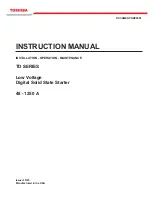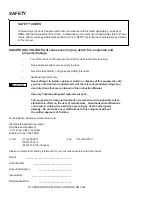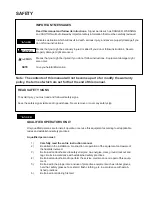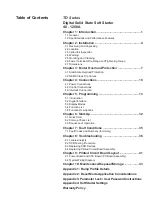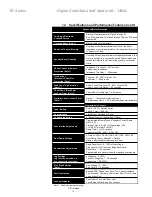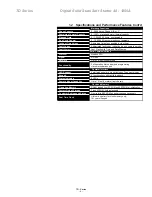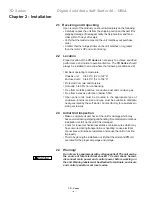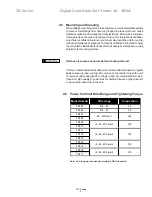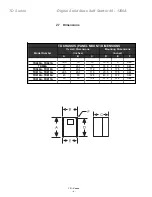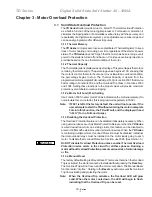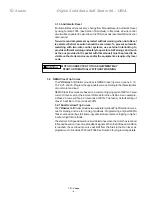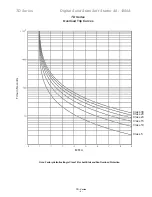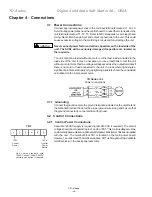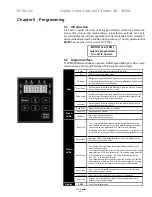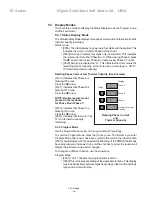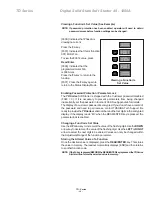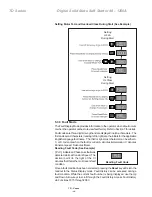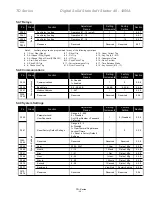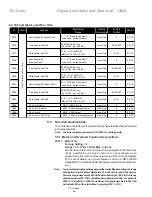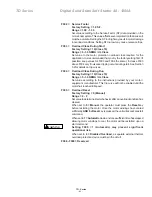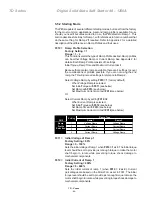
TD - Series
- 8 -
TD Series
Digital Solid State Soft Starter 48 - 1250A
3.1.3.b Automatic Reset
If Automatic Reset is necessary, change from Manual Reset to Automatic Reset
by using Function F005. (See Section 5 for details). In this mode, a 3-wire control
circuit will be capable of restart when the TD Series has reset itself after the cool
down period.
Two-wire control systems may restart without warning when Auto Reset
is selected. Extreme caution should be exercised. To prevent automatic
restarting with two-wire control systems, use external interlocking to
provide sufficient warning and safety to operators. A Warning Label (such
as the one provided in the packet with this manual) must be placed to be
visible on the starter enclosure and/or the equipment as required by local
code.
3.2 NEMA Class Trip Curves
The
TD Series
Soft Starter provides six NEMA Class trip curve options: 5, 10,
15, 20, 25, and 30. Program the appropriate curve according to the characteristics
of your motor and load.
NEMA Class trip curves are based on a common tripping point of 600% of rated
current. Curves vary by the amount of time before the unit trips. As an example,
a Class 20 curve will trip in 20 seconds at 600%. The factory default setting of
Class 10 will trip in 10 seconds at 600%.
3.2.1 Dual Overload Trip Curves
The
TD Series
Soft Starter provides two separate Overload Trip Protection Curves,
one for starting and one for running conditions. Programming a higher NEMA
Class overload during start (ramp-up) will eliminate nuisance tripping in higher
inertia or high friction loads.
The starter’s At-Speed detection circuit determines when the motor has reached
full speed based on closed loop feedback signals. When the At-Speed condition
is reached, the overload trip curve will shift from the Start to the Run level, as
programmed in Functions F003 and F004. See Section 5 for programming details.
MOTOR CONNECTED TO THIS EQUIPMENT MAY
START AUTOMATICALLY WITHOUT WARNING
WARNING

